On December 16…
“There is only one tactical principle which is not subject to change. It is to use the means at hand to inflict the maximum amount of wound, death, and destruction on the enemy in the minimum amount of time.”
~Gen. George S. Patton, Jr.
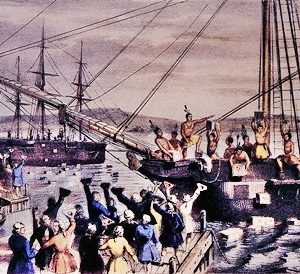
1773 – In Boston Harbor, a group of Massachusetts colonists disguised as Mohawk Indians boarded three ships and dumped 342 chests of tea into the harbor.
The three ships, the Beaver, the Eleanor, and the Dartmouth, were all privately owned, and all three were at least partially owned by American colonists.
The tea itself belonged to the East India Company, which was a private joint-stock company. Thus the Bostonians technically destroyed private property rather than launching a direct assault on the British state.
The raid, popularly known as the “Boston Tea Party,” was in protest of the British Parliament’s Tea Act of 1773, a bill designed to save the faltering East India Company by greatly lowering its tea tax and granting it a virtual monopoly on the American tea trade.
When three tea ships arrived in Boston Harbor, the colonists demanded that the tea be returned to England. After Massachusetts Governor Thomas Hutchinson refused, Patriot leader Samuel Adams organized the “tea party” with about 60 members of the Sons of Liberty, his underground resistance group.
Parliament, outraged by the blatant destruction, enacted the Coercive Acts, also known as the Intolerable Acts, in 1774. The Coercive Acts closed Boston to merchant shipping, established formal British military rule in Massachusetts, made British officials immune to criminal prosecution in America, and required colonists to quarter British troops.
The colonists subsequently called the first Continental Congress to consider a united American resistance to the British.
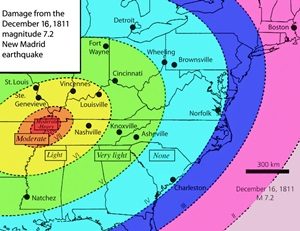
1811 – In the Mississippi River Valley near New Madrid, Missouri, the greatest series of earthquakes in U.S. history began when a quake of an estimated 7.2 magnitude on the Richter scale slammed the region.
Although the earthquake greatly altered the topography of the region, the area was only sparsely inhabited at the time, and there were no known human fatalities.
The earthquake raised and lowered parts of the Mississippi Valley by as much as 15 feet and changed the course of the Mississippi River.
At one point, the Mississippi temporarily reversed its direction, giving rise to Reelfoot Lake in northwest Tennessee.
A 30,000-square-mile area was affected, and tremors were felt as far away as the eastern coast of the United States, where the shock was reported to have rung church bells in Boston.
Additional earthquakes and aftershocks continued throughout the winter and into the spring, and of the approximately 2,000 seismic vibrations felt during the period, five were estimated to be at an 8.0 or greater magnitude.

1907 – As a gesture of America’s new presence as a world power, President Theodore Roosevelt sent the Great White Fleet on a round-the-world cruise. The fleet consisted of 16 battleships and 6 destroyers, along with various escorts.
The 43,000 mile, 14-month circumnavigation included 20 port calls on six continents, and is widely considered one of the greatest peacetime achievements in the history of the U.S. Navy.
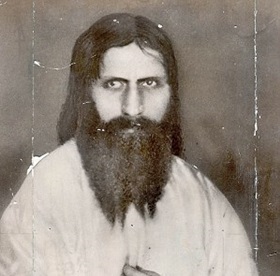
1916 – Grigori Rasputin, the monk who had wielded powerful influence over the Russian court, was murdered by a group of noblemen.
The Russian mystic and confidante of the ruling Romanov family was perceived as a threat to a continued monarchy due to his uncanny ability to distract Czar Nicholas II – and even more so his wife, Empress Alexandra.
There are very few confirmed facts about Rasputin’s death, but the legend around it says that a group from within the czar’s own circle took matters into their own hands.
The assassination did not go as planned. The plan was to use cyanide to poison Rasputin, but it was served in sugary petit fours, which deactivated the poison.
Four gunshots later, Rasputin was still alive and the assassins finally had to drown him to achieve their goal.

1930 – Herman Lamm, “the father of modern bank robbery,” died in a shootout after a botched robbery – and an even more botched attempt to escape.
After stealing $15,567 from the Citizens State Bank in Clinton, Indiana, the gang’s problems started when getaway driver W.H. Hunter blew a tire. Lamm and his men seized another car, but were forced to abandon it after they realized it could go no more than 35 miles per hour because it was fitted with a governor which the car’s owner had installed to prevent his elderly father from driving recklessly.
The gang seized a truck, but because it had very little water in the radiator, they were forced to seize yet another car, which had only one gallon of gas in the tank.
They were finally cornered near Sidell, Illinois, by about 200 police officers and armed citizens. A massive gun battle ensued, in which Hunter was wounded and later died.
Lamm and another gang member, 71-year-old G.W. “Dad” Landy, shot themselves in the head rather than surrender.
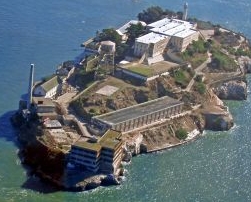
1937 – Theodore Cole and Ralph Roe escaped from the federal prison on Alcatraz Island in San Francisco Bay.
Although officials were quick to conclude the pair perished in the attempt, their remains were never found and their fate remains unknown, making the incident the first to shatter Alcatraz’s reputation as an “escape-proof” prison.
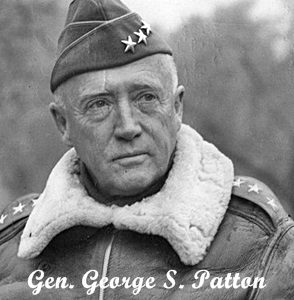
1944 – The 40-day Battle of The Bulge began. With the British and Americans closing in on Germany from the west and the Soviets approaching from the east, Adolf Hitler ordered a massive attack against them by three German armies.
The German counterattack out of the densely wooded Ardennes region of Belgium took the Allies entirely by surprise, and the experienced German troops wrought havoc on the American line, creating a triangular “bulge” 60 miles deep and 50 miles wide along the Allied front.
The embattled Americans kept up a fierce resistance even after their lines of communication had been broken, buying time for a three-point counteroffensive led by British General Bernard Montgomery and American general Omar Bradley, and more than anyone else, Gen. George S. Patton.
Patton’s Third Army had been attacking eastward (near the Saar River in France), but they turned 90 degrees, moved over 100 miles in brutal winter weather, and in just three days engaged the enemy at Bastogne, relieving the valiant defenders and ultimately pushing the Germans east across the Rhine.
For the master of mobile warfare, the Battle of the Bulge was his crowning achievement.
By the time it all ended, Germany’s last major offensive of the war had cost Hitler 120,000 men, 1,600 planes, and 700 tanks.
The Allies suffered, as well, with 80,000 killed, wounded, or missing in action, with all but 5,000 of these casualties being American.
It was the heaviest single battle toll in U.S. history.

1951 – This is the city: The pilot for Dragnet (titled The Human Bomb) aired on television as a special presentation of the NBC program Chesterfield Sound-Off Time.
Jack Webb, of course, played no nonsense, “just the facts” Sgt. Joe Friday. Friday’s partner, Ben Romero, was played by Barton Yarborough.
Four days after the pilot episode aired, Yarborough suffered a heart attack and died at the age of 51.
Full Episode … because I go to great lengths to provide you with historical information. No, I don’t expect you will watch it but it’s here if you want to. 🙂

1960 – Two airplanes collided over New York City, killing 134 people (128 on the planes and 6 on the ground).
It was a snowy morning in New York when a United DC-8 from Chicago was heading for Idlewild Airport (now John F. Kennedy International Airport.) At the same time, a TWA Super Constellation from Dayton, Ohio, was heading to LaGuardia Airport.
Due to the weather, the United flight was put into a holding pattern. When the pilot miscalculated the location of the pattern, the plane came directly into the path of the TWA flight.
One plane crashed on Staten Island, the other into Park Slope, Brooklyn, killing all 128 people on both aircraft and six people on the ground.

1969 – Hello, Dolly!, starring Barbra Streisand, Walter Matthau, and Michael Crawford, premiered at Rivoli Theater in New York City.
The film won three Oscars for Best Art Direction, Best Score of a Musical Picture, and Best Sound, and was nominated for a further four Academy Awards, including Best Picture.
Although the film is considered one of the greatest musicals ever produced, it was not a commercial success. Filmed on a budget of $25 million, it only recorded $26 million at the box office.

1970 – Love Story, starring Ali MacGraw, Ryan O’Neal, John Marley and Ray Milland, premiered at Loew’s State I Theatre in New York City.
The film earned seven Academy Award nominations, winning one (Best Original Score).
Casting Factoid: O’Neal was offered the lead role only after it was turned down by Beau Bridges, Michael York and Jon Voight.
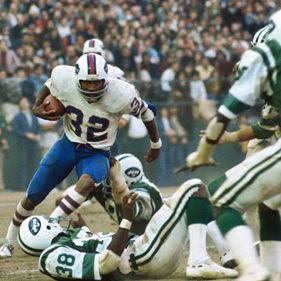
1973 – Buffalo Bills running back O.J. Simpson became the first player in the National Football League to rush for more than 2,000 yards in a single season.
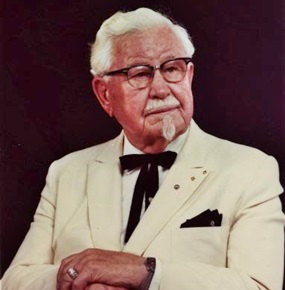
1980 – Harland David “Colonel” Sanders, founder of Kentucky Fried Chicken, died of pneumonia six months after being diagnosed with acute leukemia. He was 90.
His body lay in state in the rotunda of the Kentucky State Capitol in Frankfort after a funeral service at the Southern Seminary Chapel, which was attended by more than 1,000 people.
He was buried in his characteristic white suit and black western string tie in Cave Hill Cemetery in Louisville.
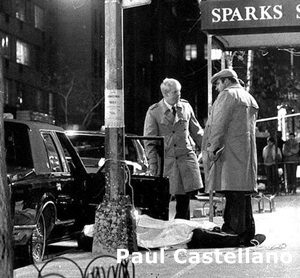
1985 – Reputed organized-crime chief Paul Castellano and Thomas Bilotti were shot to death outside Sparks Steak House in New York City.
Castellano and Bilotti – the man Castellano had promoted to underboss just two weeks earlier – were killed on the orders of John Gotti, who assumed leadership of New York’s Gambino crime family.

1989 – Federal Judge Robert Vance was instantly killed by a powerful explosion after opening a package mailed to his house near Birmingham, Alabama.
Two days later, a mail bomb killed Robert Robinson, an attorney in Savannah, Georgia, in his office. Two other bomb packages, sent to the federal courthouse in Atlanta and to the Jacksonville, Florida office of the NAACP, were intercepted before their intended victims opened them.
DNA profiles were made from the saliva on the stamps, and both the paint on the boxes and the nails that acted as the bomb’s shrapnel were traced back to the manufacturer.
Finally, an FBI agent remembered that Walter LeRoy Moody had been convicted in 1972 for setting off a pipe bomb with a similar design to that of the 1989 bombs. A search of Moody’s home failed to turn up evidence linking him to the VANPAC bombs, but bomb experts compared his 1972 bomb to the VANPAC explosives and determined that there was little doubt that the same man had made them all.
In June 1991, a federal jury convicted Moody on charges related to the bombings and sentenced him to seven life terms plus 400 years in prison. In 1997, an Alabama judge sentenced Moody to die in the electric chair for Vance’s murder.
When Moody was finally executed – not by electrocution but by lethal injection – in April 2018, he became, at the age of 83, the oldest death row inmate to be executed in modern United States history.
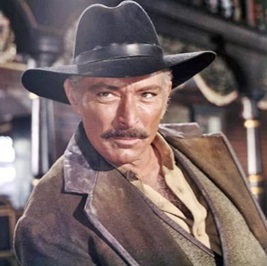
1989 – Actor Lee Van Cleef died of a heart attack at the age of 64.
He appeared in over 90 films, including The Man Who Shot Liberty Valance, The Magnificent Seven Ride!, For A Few Dollars More, The Good, The Bad and The Ugly, and over 100 television appearances, including his role as a ninja master in the NBC adventure series The Master.
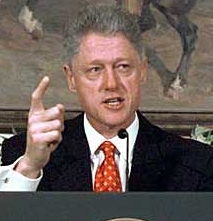
1998 – President Bill Clinton announced he had ordered air strikes against Iraq because it refused to cooperate with United Nations weapons inspectors.
Clinton’s decision did not have the support of key members of Congress, who accused Clinton of using the air strikes to direct attention away from ongoing impeachment proceedings against him.
Both the air strikes and the impeachment threat proved anti-climactic. Clinton was acquitted by the Senate in February 1999 and the air strikes on Iraq failed to intimidate Hussein into allowing weapons inspectors full access to Iraq’s weapons facilities.
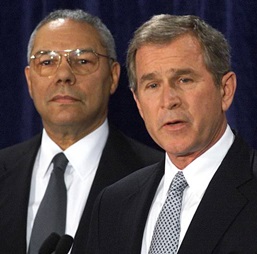
2000 – President-elect George W. Bush selected Colin Powell to become the first African-American secretary of state.

2005 – Actor John Spencer died of a heart attack at the age of 58.
He appeared on The Patty Duke Show, Presumed Innocent, The Negotiator and is best known for playing White House Chief of Staff Leo McGarry on television’s West Wing)

2007 – Singer/songwriter Dan Fogelberg died of prostate cancer at the age of 56.
Fogelberg’s music was powerful in its simplicity. He didn’t rely on the volume of his voice to convey his emotions; instead, they came through in the soft, tender delivery and his poignant lyrics.
His hits Leader of The Band, Run For The Roses, Part of The Plan, Longer and Same Old Lang Syne, helped define the soft-rock era of the late 70s and early 80s.
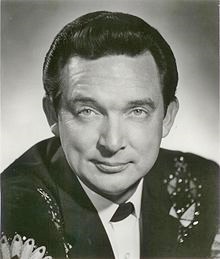
2013 – Singer/songwriter Ray Price died of pancreatic cancer at the age of 87.
Long regarded as among the best male voices of country music, Price had several major hit songs, including For The Good Times, Night Life, Release Me, and Crazy Arms.
He was inducted into the Country Music Hall of Fame in 1996.
Compiled by Ray Lemire ©2019 RayLemire.com / Streamingoldies.com. All Rights Reserved.